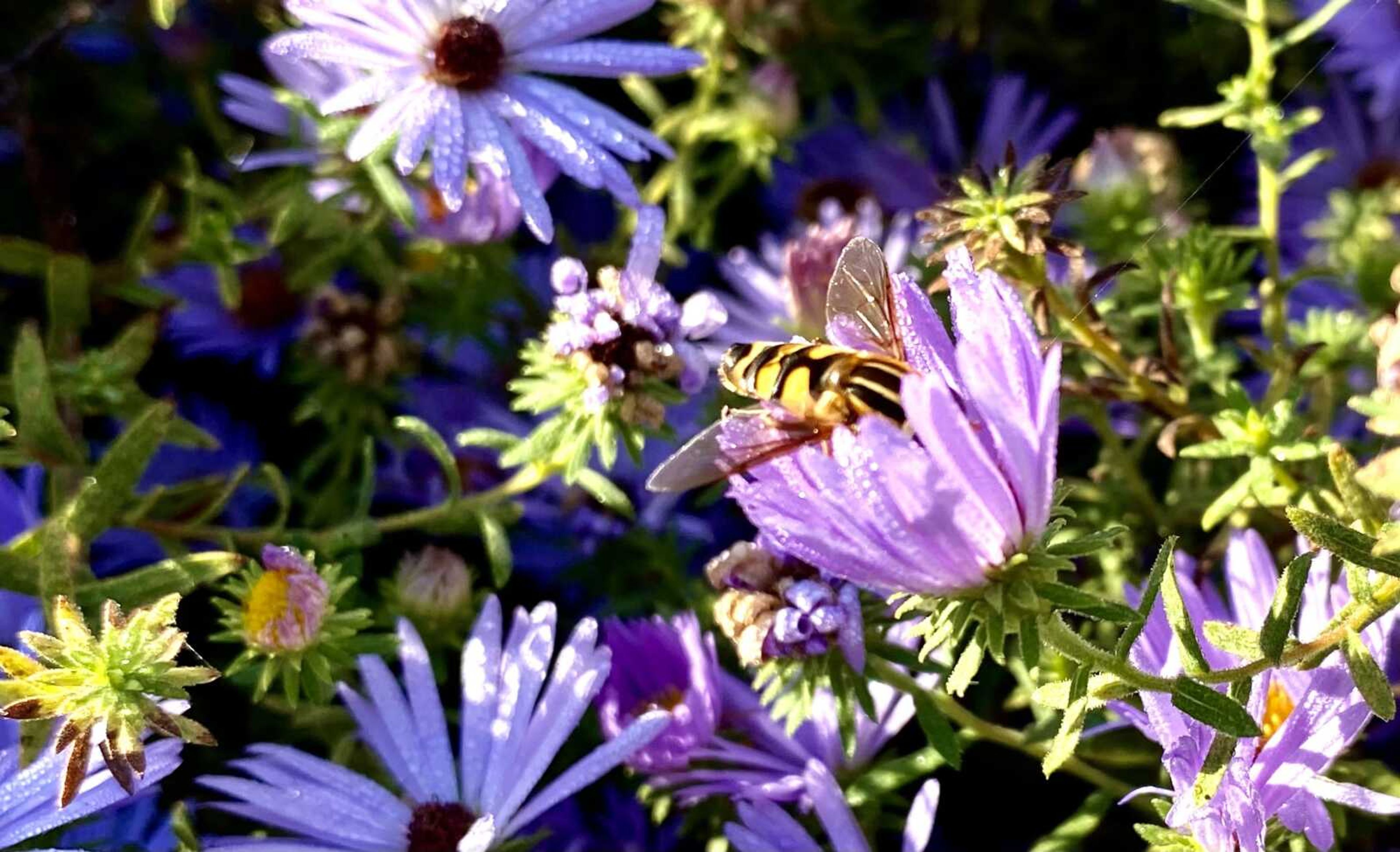The beautiful aromatic aster
I took this photo in late October. The early morning sun was rising over tall trees almost directly in front of me. This accounts for the dark background in the photo. The sun was lighting up the dew-laden asters in a slow progression. I found a favorable composition and waited. There were carpenter bees, small yellow butterflies, a few Monarch butterflies, small gnats, bee-fly mimics and a few other bugs enjoying the flowers...
I took this photo in late October. The early morning sun was rising over tall trees almost directly in front of me. This accounts for the dark background in the photo. The sun was lighting up the dew-laden asters in a slow progression. I found a favorable composition and waited. There were carpenter bees, small yellow butterflies, a few Monarch butterflies, small gnats, bee-fly mimics and a few other bugs enjoying the flowers.
At the right time a beautiful yellow and black hover fly landed in the perfect place. The complimentary colors of purple and yellow make for nice color harmony. The fact that the head of the hover fly is not visible poked inside the aster is proof that the fly is a valuable pollinator.
This is the aromatic aster. It is native to Southeast Missouri. It is quite wonderful producing hundreds of purple flowers. It is relatively easy to establish and can even be used as a hedge. It can grow to about 4 feet tall and loves lots of sunshine.
Connect with the Southeast Missourian Newsroom:
For corrections to this story or other insights for the editor, click here. To submit a letter to the editor, click here. To learn about the Southeast Missourian’s AI Policy, click here.










